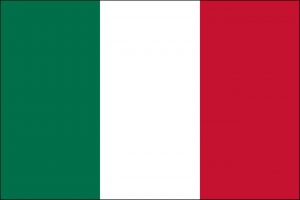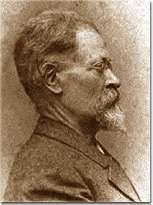 Διαδρομές
Διαδρομές
 Διαδρομές
Διαδρομές
 Διαδρομές
Διαδρομές

This itinerary was conceived to satisfy the legitimate desire to travel and to get to know each other. In order for the travel to be an inclusive and stimulating experience and for us to enjoy its magic to the full, we have designed a path that is as free from architectural barriers, but rich in cultural stimuli and scenic beauty.

Questo itinerario è stato concepito per soddisfare il legittimo desiderio di viaggiare e di conoscere di ciascuno di noi, nessuno escluso. Affinché viaggiare possa essere un’esperienza inclusiva e stimolante, affinché nessun limite precluda la possibilità di vivere a pieno la magia di un viaggio, abbiamo pensato un percorso il più possibile privo di barriere architettoniche, ma ricco di stimoli culturali e di bellezze paesaggistiche.
 Διαδρομές
Διαδρομές

In this short itinerary we suggest the traveler discover the charm of Corfu that enchanted these writers, retracing the places described in their books.

In questo breve itinerario proponiamo al viaggiatore di scoprire il fascino di Corfù che incantò questi scrittori, ripercorrendo i luoghi descritti nei loro libri.
 Διαδρομές
Διαδρομές

The Itinerary of myths and heroes is a journey that will guide the traveler or reader through the archaeological areas of Puglia, along the Appian Way and its deviationes, between mythological tale and history, following the historical writings of famous authors from the past such as Orazio as well as prestigious contemporary writers like Paolo Rumiz; these travellers have crossed and described this Way. The main stops will be Canosa, Ruvo, Bari, Egnazia, Gravina, Altamura and finally Taranto, one of the most important centres of Magna Graecia, which boasts one of the most beautiful archaeological museums in the world: Marta. Following this itinerary, the traveler will finally be invited to cross the Adriatic to reach the Ionian Islands, which enjoy a unique position in the mythical and epic Western imaginary. The Homeric poems, which are set in this fascinating and fantastic insular world, have over time led people to overlap the literary image of the island of the Phaeacians with the real image of Corfu, and to consider Ithaca as the home of the most famous traveler of all times: Ulysses. Entire generations have been fascinated by a journey that perhaps never took place; although the historical-archaeological evidences are very few and do not allow for a sure identification of the Ionian Islands as the actual theatre of the peregrinations described in the Odyssey, «il turista che, appressandosi per mare alla Grecia, oggi vede da lontano Itaca – as Umberto Eco notes – prova un’emozione omerica». The travellers who are interested in following this itinerary will be invited to go in search of those Homeric emotions by following these islands with the Odyssey in their hands and guided by an educated eighteenth-century writer and traveler, Saverio Scrofani, who has left us intense descriptions of these places, full with mythological and classical suggestions in his book Viaggio in Grecia.

L’itinerario dei miti e degli eroi è un percorso che, tra racconto mitologico e storia, guiderà il viaggiatore o il lettore attraverso le aree archeologiche della Puglia, lungo la via Appia e le sue deviationes, seguendo gli scritti odeporici di celebri scrittori del passato, come Orazio, e prestigiose firme contemporanee, come Paolo Rumiz, viaggiatori che quella strada hanno percorso e descritto. Le principali tappe saranno Canosa, Ruvo, Bari, Egnazia, Gravina, Altamura e infine Taranto, centro tra i più importanti della Magna Grecia, che vanta uno dei più bei musei archeologici al mondo: il Marta. Seguendo questo itinerario, il viaggiatore sarà invitato infine ad attraversare l’Adriatico per raggiungere le Isole Ionie, che godono di una posizione unica nell’immaginario mitico ed epico occidentale. I poemi omerici, ambientati in questo fascinoso e fantastico mondo insulare, hanno portato nel corso del tempo a sovrapporre all’immagine reale di Corfù quella letteraria dell’isola dei Feaci, e a riconoscere in Itaca la patria del più celebre viaggiatore di ogni tempo: Ulisse. Intere generazioni sono state ammaliate da un viaggio forse mai avvenuto e nonostante le evidenze storico-archeologiche non siano tali da permettere una sicura identificazione delle Isole Ionie come l’effettivo teatro delle peregrinazioni descritte nell’Odissea, «il turista che, appressandosi per mare alla Grecia, oggi vede da lontano Itaca – fa notare Umberto Eco – prova un’emozione omerica». Proponiamo al viaggiatore che seguirà questo itinerario di andare alla ricerca proprio di quelle emozioni omeriche percorrendo queste isole con in mano l’Odissea e guidati da un colto scrittore-viaggiatore settecentesco, Saverio Scrofani, che di questi luoghi ci ha lasciato intense descrizioni, cariche di suggestioni mitologiche e classiche, nel suo libro Viaggio in Grecia.
 Διαδρομές
Διαδρομές

In the 1970s, the British poet and writer Lawrence Durrell wrote The Greek Islands, the book on which this itinerary is grounded.

Negli anni Settanta del Novecento, il poeta e scrittore inglese Lawrence Durrell scrisse The Greek Islands, libro alla base di questo itinerario.
 Βιβλιοθήκη
Βιβλιοθήκη
NICCOLÒ TOMMASEO
THE SECOND EXILE
Niccolò Tommaseo’s writings concerning the things of Italy and Europe from 1849 onwards
Volumes 1-2-3
A selection of letters and texts written during his Corfiota stay
Introduction by R. Nicolì
This digital edition produced for the POLYSEMI Library proposes a significant sampling – albeit arbitrary to some extent – of the letters sent by Niccolò Tommaseo[1] during the time spent in Corfu, where he moved in August 1849 after the fall of the Venetian Republic of which he had been one of the most ardent defenders. On the island the writer remained until May 1854. This is his “second exile”[2], as he entitled the three volumes of the memoirs of those years entrusted in 1862 to the Milanese publisher Francesco Sanvito. From that edition the parts presented here have been selected and transcribed. Περισσότερα “Niccolò Tommaseo – GR” →
 Βιβλιοθήκη
Βιβλιοθήκη
LALLA ROMANO
DIARY OF GREECE
Chapters 1 – 4
Introduction by R. Nicolì
This digital edition of the POLYSEMI Library presents the transcription of some famous pages taken from the Diary of Greece by Lalla Romano; these are contained, together with the author’s entire works, in Works, two volumes edited by Cesare Segre and published by Arnoldo Mondadori in 1991 and 1992 respectively. Περισσότερα “Lalla Romano – GR” →
 Βιβλιοθήκη
Βιβλιοθήκη
SIMONE POMARDI
JOURNEY TO GREECE MADE BY SIMONE POMARDI IN 1804, 1805 AND 1806 INCLUDING COPPER TABLES
VOLUME 2
Introduction by R. Nicolì
In 1804, 1805 and 1806, for eighteen months an Irish aristocrat and talented watercolorist called Edward Dodwell and the Roman painter Simone Pomardi[1], known for his large watercolors of almost always architectural subject depicting Rome and its surroundings, visited Greece. About 900 drawings and watercolors of that journey[2] can still be found and two texts that tell the experience: the one published in 1819 by Dodwell, A Classical and Topographical Tour through Greece during the years 1801, 1805, and 1806 (with drawings by Simone Pomardi), and the one written by Pomardi and published in two volumes at Vincenzo Poggioli Chamber Printer in 1820; for the POLYSEMI Library, we chose and transcribed two chapters strictly pertinent to the Ionian Islands, taken from volume 2. Περισσότερα “Simone Pomardi – GR” →
 Βιβλιοθήκη
Βιβλιοθήκη
Raffaele Liberatore, Viaggio pittorico nel Regno delle due Sicilie
Introduction by R. Nicolì
The text by Raffaele Liberatore, of which some parts relating to the Apulian area were selected for the POLYSEMI Digital Library, was published between 1829 and 1832 by Cuciniello and Bianchi. It is a vast work made up of three in folio volumes and 180 engravings whose aim was to illustrate the landscape and architectural beauties of the Kingdom after a long and scrupulous reconnaissance. Περισσότερα “Raffaele Liberatore – GR” →
 Βιβλιοθήκη
Βιβλιοθήκη
 Βιβλιοθήκη
Βιβλιοθήκη
Introduction by R. Nicolì
This text, here entirely reproduced for the POLYSEMI Library, is a pamphlet written by the renowned Salento scholar Cosimo De Giorgi, published by the Milan printing house Wilmant in 1872.[1] Originally, it was a letter – dated 10th October 1870 – the author sent to his colleague from Pisa Guido Mugnaini; its content is closely related to the Apulian Project Area, since it concerns a short excursion from Bari to Taranto by train. In the nineteenth century the inclination for local and limited itineraries, after a season of long journeys all over the peninsula, as the Grand Tour required, was new. Περισσότερα “Cosimo De Giorgi – GR” →